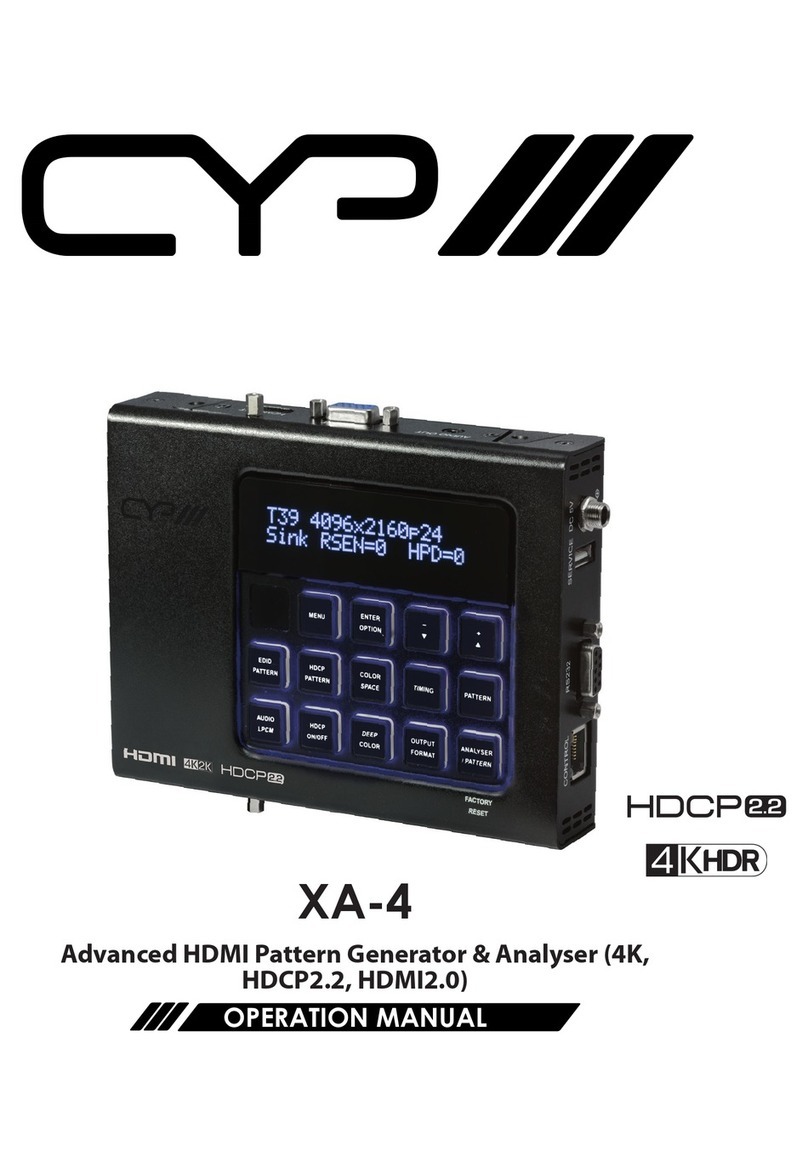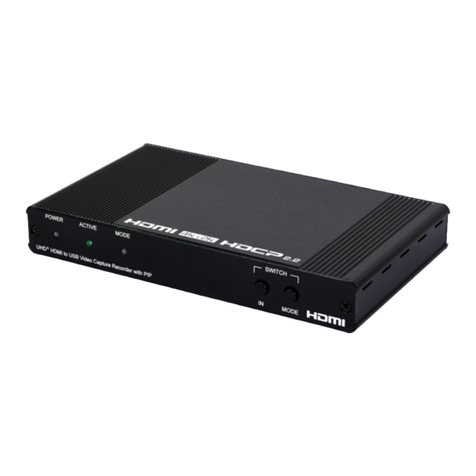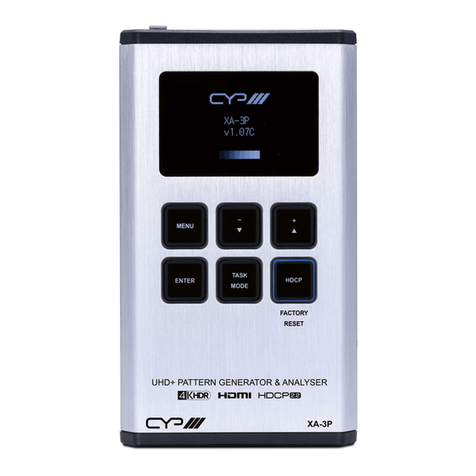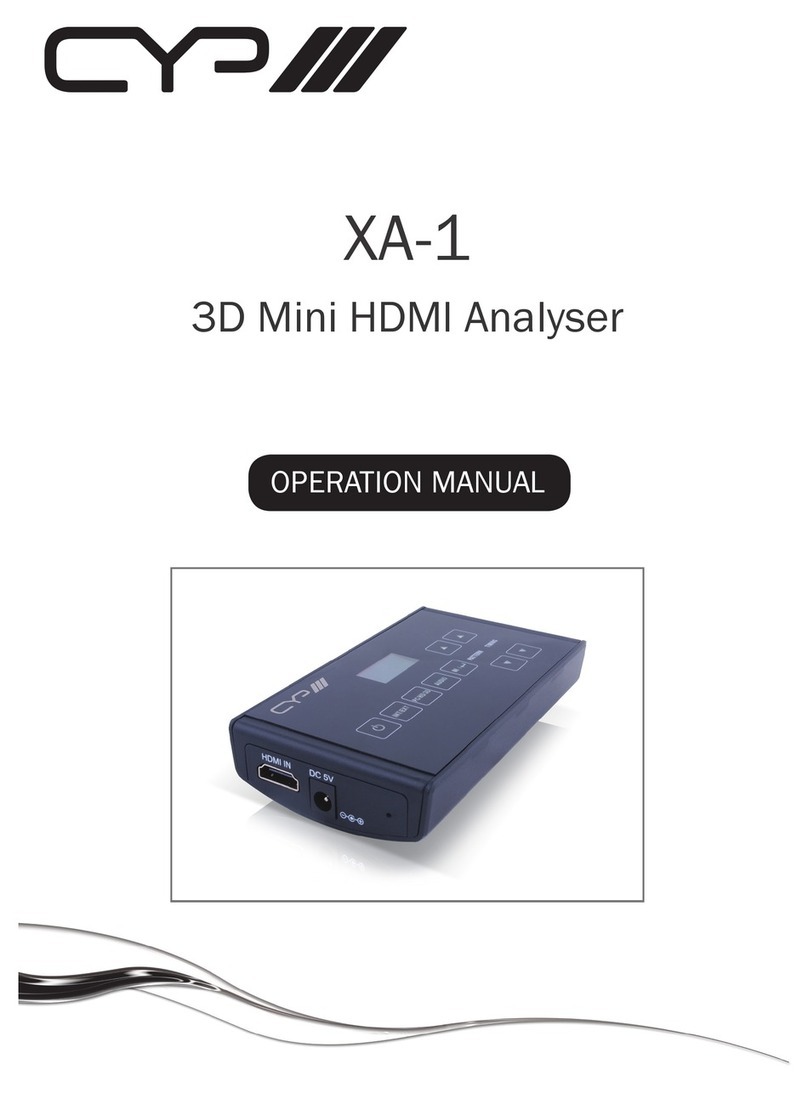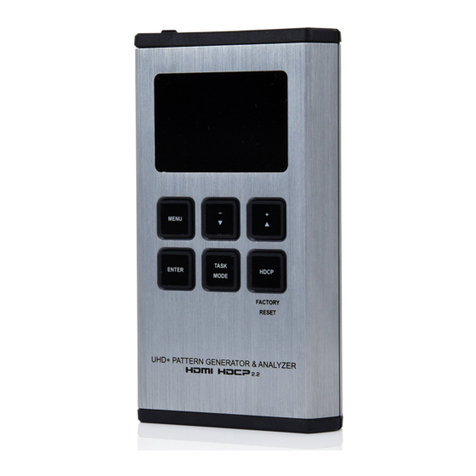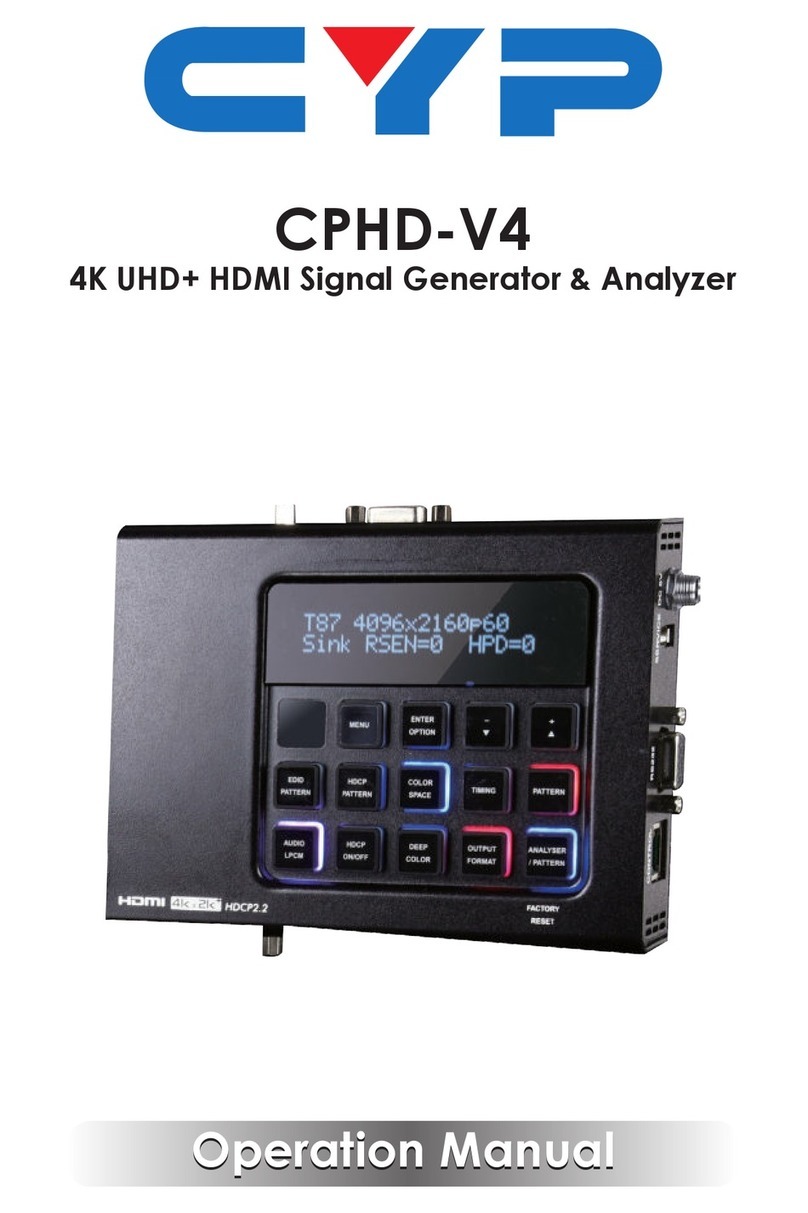
5
Force Hot-Plug: When in Analyzer Mode, press and hold the button for
2 seconds to force a hot-plug on the HDMI input.
AV Mute: When in Pattern Mode, press and hold the button for 2
seconds to turn on/o the AVMute bit within the output’s GCP (General
Control Packet).
Factory Reset: Press and hold this button while powering the unit on to
perform a factory reset of the unit.
9EDID PATTERN Button: Press to enable selection of the EDID to use on
the HDMI input port. The +/▲ & −/▼ buttons will illuminate and are used
to select the new EDID. The currently selected EDID will be shown on
the OLED display. The new EDID will automatically become active after
selecting it and pausing for 5 seconds.
10 AUDIO LPCM Button: Within Analyzer mode, press to select which
Serial Data audio source pair (SD0~SD3) is routed to the primary stereo
channel (LPCM 2.0 and headphone output) for monitoring. The LED color
indicates the selection (O=SD0, Red=SD1, Blue=SD2, Purple=SD3).
Within Pattern mode, press to switch between LPCM 2.0 (LED=Red), 5.1
(LED=Blue) and 7.1 (LED=Purple) channel test tone output formats.
Volume Control: Press and hold this button for 2 seconds to allow
adjustment of the output volume by using the +/▲ & −/▼ buttons.
11 HDCP PATTERN Button: Press to enable/disable the OSD display of the
detected HDCP version support and handshaking information between
the sink and source. In Analyzer mode the unit is the Rx, in Pattern mode
the unit is the Tx. In Pattern mode, if HDCP handshaking fails, an error
message “HDCP OUT FAIL” will be displayed on the OSD.
12 HDCP ON/OFF Button: Press to switch between supported HDCP
versions or to disable HDCP. Within Analyzer mode, OFF (LED=O),
HDCP 1.4 (LED=Red), and HDCP 1.4+2.2 (LED=Blue) modes are
available for the input port. Within Pattern mode, OFF, HDCP 1.4, and
HDCP 2.2 modes are available for the output port.
13 COLOR SPACE Button: Press repeatedly to switch between the
available color space formats. The button’s LED is colored to indicate the
current color space: Red=RGB, Blue=YCbCr 4:4:4, Purple=YCbCr 4:2:0,
O=YCbCr 4:2:2.
Note: This control is not valid when the output resolution is set to bypass
mode.
14 DEEP COLOR Button: Press repeatedly to switch between the available
output color bit depth options. The button’s LED is colored to indicate the












